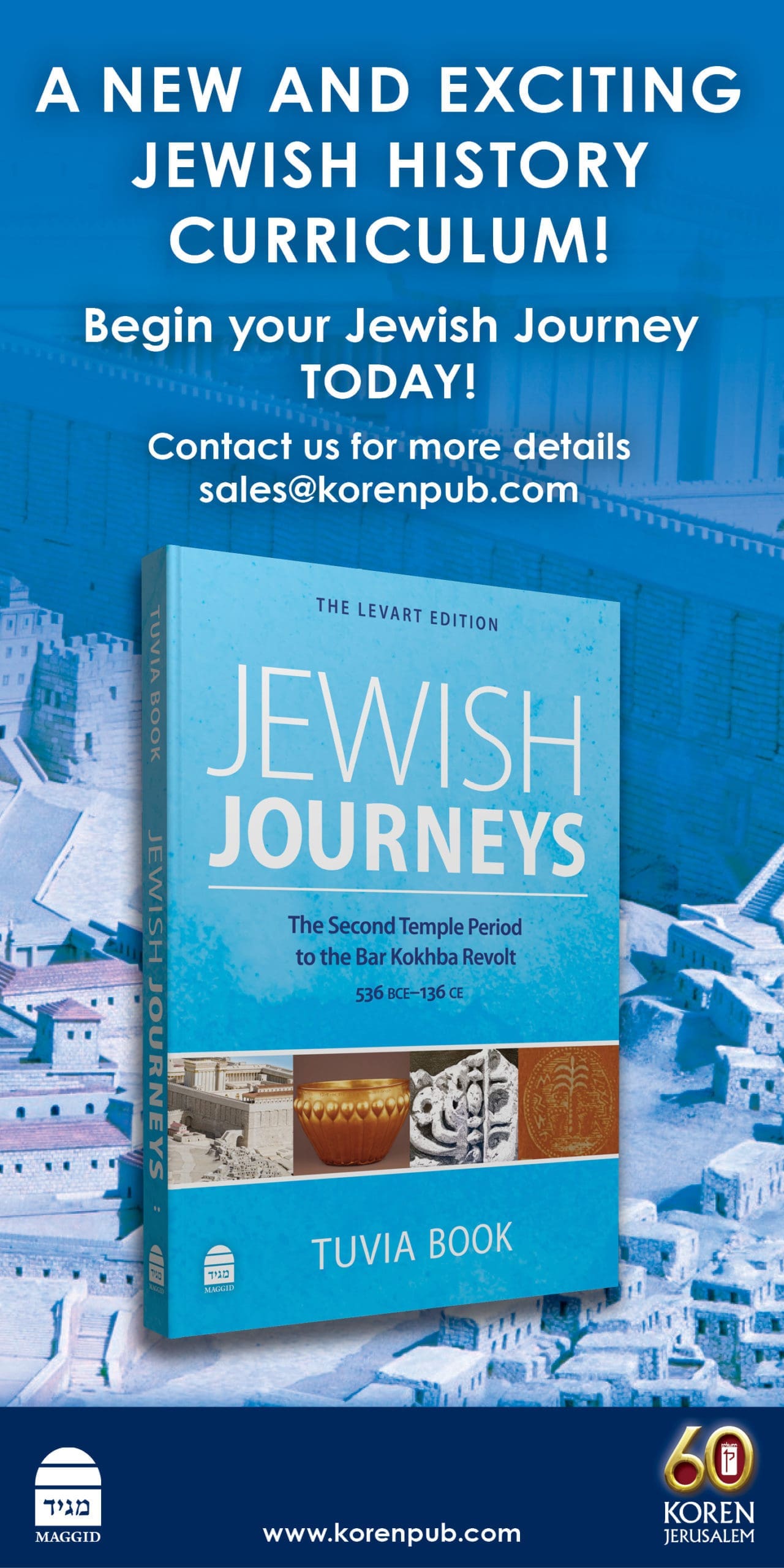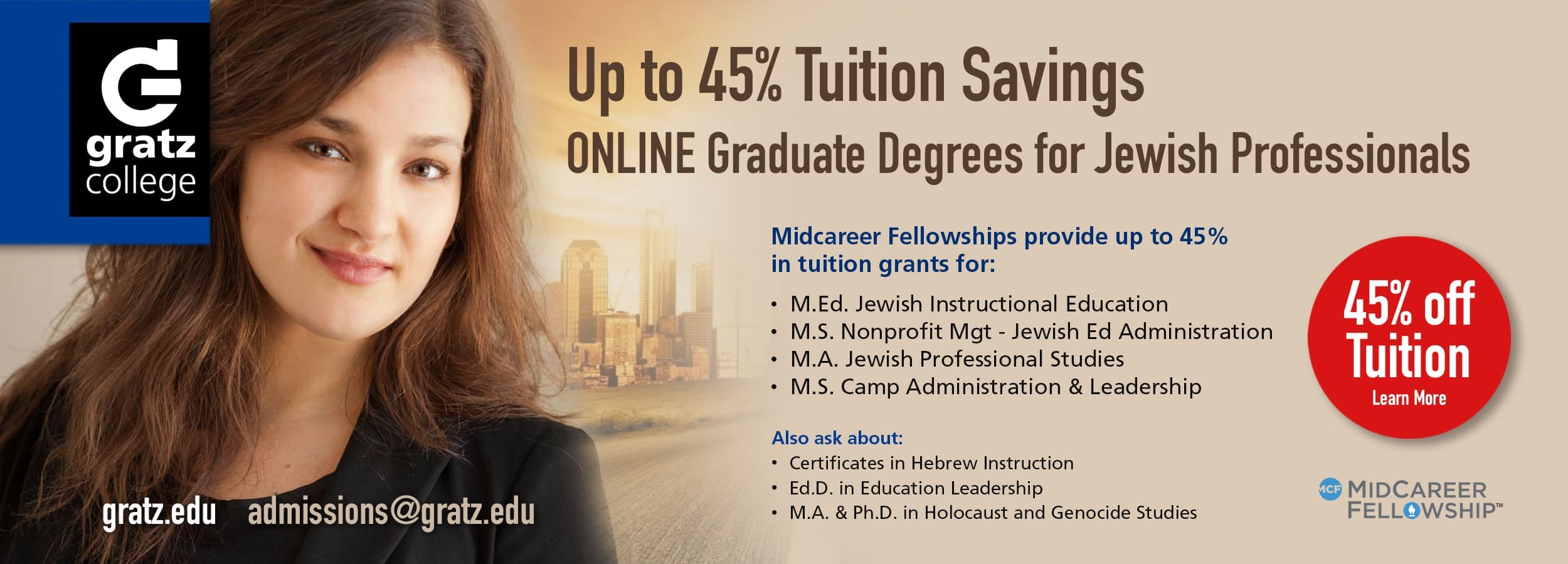For years, Stanford Professor Sam Wineburg has urged history teachers to go “beyond the bubble” and teach students historical thinking rather than rote memorization. Preparing students to be historical thinkers by teaching them to read sources critically and contextualize information are the guiding goals of my history classes. When I teach World War I, for example, I ask students to evaluate primary sources by questioning their reliability and comparing them to other contemporaneous perspectives. When I teach Jewish History, I take the same approach to the study of Jewish texts, encouraging students to read them in their historical context: to appreciate the author’s intended audience and acknowledge the author’s purpose. But, unlike my teaching of World War I, I have an additional goal when I teach Jewish History: to shape and strengthen my students’ Jewish identities.
While these apparently disparate goals—to foster critical thinking and to foster Jewish identity—don’t have to conflict, they can exist in tension with one another, and accomplishing both requires planning and creativity. The tension can emerge when sources’ varied perspectives expose students to negative aspects of the Jewish story or to perspectives that do not reflect the values of the school or parent body. For me, however, these moments of tension are actually among the richest of my teaching life because they hold the most potential for engaging students in deep, meaningful reflection that can result in a stronger Jewish identity. To fulfill critical thinking alongside the growth of Jewish identity, I draw on primary texts that express diverse points of view while giving students a non-judgmental space in which to reflect on their own connections to, and occasional discomfort with, these perspectives.
For instance, our 9th and 10th-grade history curricula integrate general history with Jewish history, which allows us to present Jewish history within its broader political, social, and intellectual context. One of our richest explorations occurs during the Jewish history unit that follows our study of the French Revolution through Napoleon. After discussing the manifestation of Enlightenment values through the Revolution’s efforts to protect civil rights for all citizens, I ask how emancipation would impact the Jews, drawing on our earlier discussions, but applying them in a way that feels more personal to my students.
This Jewish history unit extends beyond the immediate aftermath of the French Revolution into the 19th century and the emergence of Jewish denominations in Germany. This content helps students understand the diversity of Jewish life that they observe today, so we begin in the present, enabling students to see, from the outset, the impact of history on their contemporary lives. My colleague and I crafted four fictional personalities that speak to different expressions of 21st-century Jewish identity.
Yankl Rosenbaum is a Satmar Hasid who lives in Boro Park and works at B & H Photo in Manhattan. He speaks Yiddish at home with his wife and children, avoids socializing with non-Jews, and shuns the internet.
Sarah Weinblum is a Reform rabbi committed to tikkun olam. She partners with the local church and mosque to address food insecurity in her community and crafts her weekly sermons around the Torah portion and social justice issues.
Jacob Smith’s father is Jewish but his mother is not, and he aspires to serve in the US Congress or even the Senate.
Rachel Cohen recently married her wife Gila at a small COVID-friendly ceremony conducted by her family’s rabbi. They plan to send their children to a local Jewish day school.
After reading these brief biographies, I ask students to consider why these Jewish identities would have been impossible 300 years ago. What changed to make Jewish identity so diverse and flexible?
This activity prompts a discussion about the impact of the Enlightenment and emancipation on the Jews followed by an examination of the ideologies of Abraham Geiger, Samson Raphael Hirsch, Zecharias Frankel, and Moshe Sofer that presents all of these thinkers as reformers. Each faced the challenge of preserving Judaism in the face of progress during a new era when Jewish affiliation was voluntary. Each negotiated rational challenges to faith and new ideas about national identity. Each strove to safeguard the essence of Judaism and fulfill the Jewish mission as he saw it. Students analyze primary sources from all of these thinkers so that they can hear, in the writers’ own (translated) words, what they prioritized and what they sacrificed to achieve their goals.
The final assignment in the unit is a personal reflection that asks: Which approach or approaches to progress and change do you find most comfortable and compelling, and why?
I then ask students to reflect on these two points in their responses:
- Does this approach match the way you identify as a Jew?
- Which do you think is best for promoting the survival of Jewish tradition in the modern age or “preserving Judaism in an era of choice?”
There are no right answers to these questions, and I am careful not to judge students. They can be assessed on their understanding and application of the texts’ ideas but not on their opinions. I am consistently moved by the honesty and thoughtfulness of students’ responses. The exercise encourages students to reflect on their personal connections to Judaism as well as to the challenges of modernity; it pushes them to see themselves in a chain of Jewish history, grappling with the same issues and pressures that Jews confronted in the past. For students who may have been quick to judge an approach that differs from their own, this activity encourages them to recognize that individuals’ positions are often responses to external pressures, and all are rooted in legitimate values. Finally, by articulating their views, students become more active participants in their Jewish journeys. While they may still be under the influence of their families and teachers, by defending an approach to Jewish survival, they become active shapers of their Jewish lives and of the Jewish future.
This year, my colleague and I developed a new unit to expose students to the rich and diverse lives of Jewish teens in interwar Poland. After studying that time period more generally, students learned about many of the Jewish youth groups present in Polish society during these years. They then read excerpts from autobiographies written by Jewish teens from this time as part of an essay competition conducted by YIVO. These autobiographies offer an intimate glimpse into the pressures and opportunities these youth felt, pressure to figure out who they are and how to express their Judaism. My students were surprised to realize that, despite significant differences in their experiences, they could relate to these struggles. To help my students further probe the lives of these youth, I had them create an Instagram account or TikTok story to explore their aspirations and fears.
Addressing multiple goals is not easy, but in teaching Jewish history, I believe that it is necessary. To ignore the goal of teaching students to be critical thinkers about their Jewish past would be to minimize and dishonor that past. To pass up the opportunity to cultivate the students’ Jewish identity would be to miss the chance to help students find meaning in the Jewish past, an important personal and educational goal. To be able to do both is the gift of teaching an integrated curriculum, and to have fun while doing it is rewarding to both the teacher and the students.
Special thanks to my colleague Rebecca Wolf who collaborated with me developing the two units described in this article.

Adina Shoulson is the SAR High School (Riverdale, NY) History Department Chair and has helped develop the history curriculum. Ms. Shoulson received her B.A. with honors from Columbia University with a major in Religious Studies and a concentration in Psychology. She earned her M.Phil. at New York University in Modern Jewish History.







